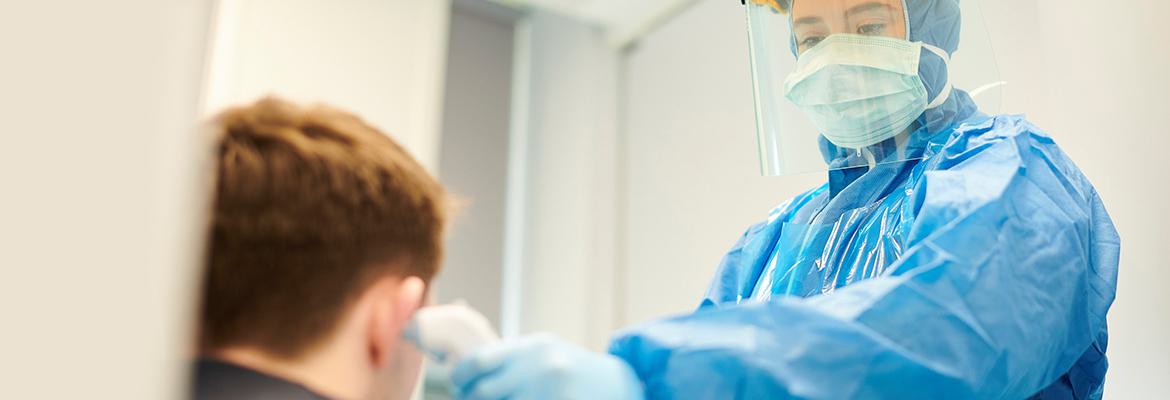The COVID-19 pandemic has brought on a dire need for support, funding and equipment. Our latest blog in this series highlights the reimbursable personal protective equipment as classified by FEMA. Read the blog below or download the PDF to follow along as Bill Roche explains which equipment is eligible for reimbursement, and how you may qualify.
***************************************************************************************
The President’s March 13, 2020 nationwide emergency declaration provides access to funds to support eligible Emergency Protective Measures (EPM) needed to respond to the COVID-19 emergency. These funds, eligible to hospitals may be reimbursed under Category B of the Federal Emergency Management Agency’s (FEMA) Public Assistance (PA) program.
Healthcare facilities are understandably overwhelmed caring for and saving lives of the massive influx of COVID-19 patients. Our team’s experience offers oversight and guidance throughout the intricate PA reimbursement process. Costs for these services are eligible for reimbursement through Direct Administrative Costs under this declaration.
Eligible emergency protective measures taken to respond to COVID-19 at the direction or guidance of public health officials may be reimbursed under Category B of the agency’s PA program. Emergency medical care activities under the COVID-19 Declarations include the purchase of PPE, new medical equipment and consumable medical supplies necessary to respond to COVID-19 cases.
By FEMA’s definition, new equipment is different than consumable items and supplies, including Personal Protective Equipment (PPE), and almost always costs significantly more. Often new equipment is not fully exhausted during response and recovery, raising the issue of salvage and residual value. Therefore, unique rules apply.
In order to qualify for reimbursement, any newly ordered equipment must solely be for providing emergency protect measures to address the immediate threat to life and safety. Any durable medical equipment that’s purchased, rented or leased must be viewed through the lens of what’s reasonable and prudent in order to address any immediate need.
For example, typically it’s less expensive to buy medical equipment versus leasing or renting. However, the wait time for obtaining leased or rented equipment is much less – as little as three days – contrasted with the months it may take to receive purchased items. Given FEMA’s direction is to make the prudent decision that will serve to address the immediate threat to lives, leasing or renting medical equipment will most always be the most viable course of action for hospitals.
Furthermore, during the COVID-19 pandemic, reimbursement decisions will be based upon what’s deemed prudent at the time purchase such as immediate need, usage projections and delivery time. Cost remains an important factor, albeit a tertiary one. Put simply, that’s why documentation has never been so important.
It’s vital to point out that durable medical equipment relates to equipment that’s not immediately depleted or consumed. The equipment serves a repeated use and a life that goes beyond the length of time and number of uses during the emergency. Because of this, FEMA must consider salvage or residual value after the emergency ends. If hospitals don’t understand or plan for this, the reduction in assistance may be significantly less and a tremendous unforeseen financial impact to the facility.
Isolation gowns, masks, face shields, safety glasses and gloves, thermometers, disinfecting wipes, sanitizer, respirators and ventilators are many of the items classified under FEMA’s reimbursable PPE items. Supplies for triage and pre-admission are most often covered, however once a patient is admitted, FEMA expects patients’ insurance to cover costs. For uninsured patients, funding is available from via the Department of Health and Human Services (HHS) Public Health and Social Services Emergency Fund, although the rules on how hospitals and medical service providers can access this funding has not yet been released.
As COVID-19 continues its spread across the United States, healthcare providers face a staggering lack of PPE, with shortages in a federal stockpile of emergency medical equipment contributing to unequal distribution among affected communities. The World Health Organization recently announced that the chronic [global] shortage of PPE is one of the most urgent threats to the collective ability to save lives.
Furthermore, hospitals are now seeing PPE supplies are priced at a market rate that exceeds pre-emergency pricing, which FEMA recognizes. In this case, administrators should do their best to document that the items purchased are consistent with the current market rate for like products.
Of note, FEMA will not duplicate assistance provided by the HHS, including the Centers for Disease Control and Prevention, or other federal agencies. This includes necessary emergency protective measures for activities taken in response to the COVID-19 incident. FEMA assistance will be provided at the 75 percent Federal cost share.
We look forward to the opportunity to guide our healthcare clients. Please contact mefor information or to schedule a step-by-step webinar which will provide details on costs that are potentially eligible for reimbursement under the emergency declaration.
ABOUT BILL ROCHE
BILL ROCHE; PROGRAM MANAGER, FEDERAL ASSISTANCE is an expert at leading programs and projects alike in various disaster planning, response and recovery operations. He has held multiple positions within the Department of Homeland Security (DHS) and the Federal Emergency Management Agency (FEMA), Region IX over the course of 25 years.
